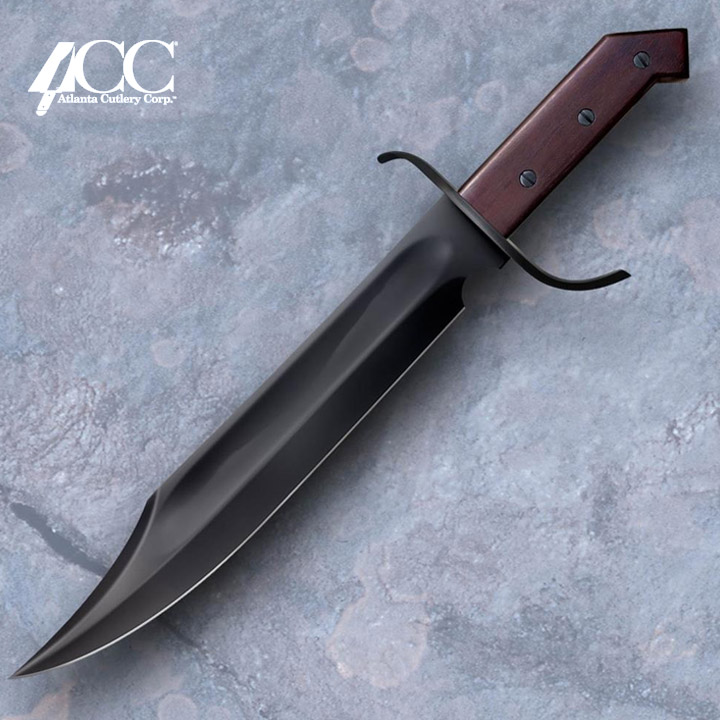Bowie Knife
25th Mar 2016
Knife collection is fast losing its art in the razzmatazz of modern hunting technology. As hunting intensifies with the use of compound bows, high power rifles and thermal night vision scopes, old gamers protest about a diminished sense of challenge and thrill. There appears to be something counter intuitive in making hunting more safe, more precise to the human spirit that is lusting for the rush of adrenalin - bare hands, glinting weapons, unexpected moves and face to face combat. Even as technology advances into the hunting game, diehards adore the simplicity of a handcrafted heavy fighting (Bowie) knife. The verdict is out - let’s keep certain things simple in life.
Knife collectors spend a lifetime and a fortune collecting different kinds of knives, but the good old Bowie knife remains an all-time classic that fans stay faithful to. Most agree “there is nothin’ and absolutely nothin’ that beats a Bowie knife”. The fixed-blade fighting knife was created by James Black for the western folk hero James Bowie, and like many classic collectibles has an interesting story around it. Bowie rise to fame began in 1827 with the infamous Sandbar Fight. What began as a duel between two other men deteriorated into a melée in which Bowie, having been shot and stabbed, killed the sheriff with a large knife. This, and other stories of Bowie's prowess with a knife, led to the widespread popularity of the Bowie knife.
After the Vidalia Sandbar fight, Bowie became quite a legend and received many requests for knives of the same design. Bowie and his brothers would later commission more ornate custom blades from various knife makers including Daniel Searles and John Constable. George William Featherstonhaugh, the British American geologist and geographer described them as, "These formidable instruments...are the pride of an Arkansas blood, and got their name of Bowie knives from a conspicuous person of this fiery climate.
The Bowie has come a long way from its initial days when it resembled a Spanish hunting knife and differed little from a common butcher knife. The first known Bowie knife reveals a strong Mediterranean influence, especially in its shape which is very much like the traditional Spanish folding knife that used to be carried by immigrants to Mexico and other territories of the Old Southwest.
There are quite a few things that separates the Bowie knife from other knives. It has a crossguard and a clip-point. A clip-point is a shape of a blade that is both curved and narrowed towards the tip-designed for easier entry (This shape goes back to as early as Macedonian times). The crossguard is the highest point of the handle that serves as a guard for the hand from slipping down the blade, tactically speaking. the Bowie knife was originally designed to fill the need for a wearable, convenient close combat weapon - a shortened sword best used for hand-to-hand combat, but possibly the biggest advantage it offers its wielders is a convenient ability to be holstered next to the sidearm or opposite the sidearm in a sheath. It is a fantastic tool for cutting open a fresh kill, and accurate enough to trim fingernails.
The knife pattern is still popular with collectors; in addition to various knife manufacturing companies there are hundreds of custom knife makers producing Bowies and variations. The most famous version of the Bowie knife was designed by Jim Bowie and presented to Akkansas blacksmith James black in December 1830. The authentic Bowies crafted by Windlass Steelcrafts have a generous slice of America’s past. Most of them are hand forged from well-tempered Steel to take and hold a razor edge and come with a leather sheath. A Bowie awaits the last of the fiercely spirited hunter, who mocks new gadgets and technology and doesn’t wish to hide himself from the animal he seeks to hunt.


 Gift Cards
Gift Cards
